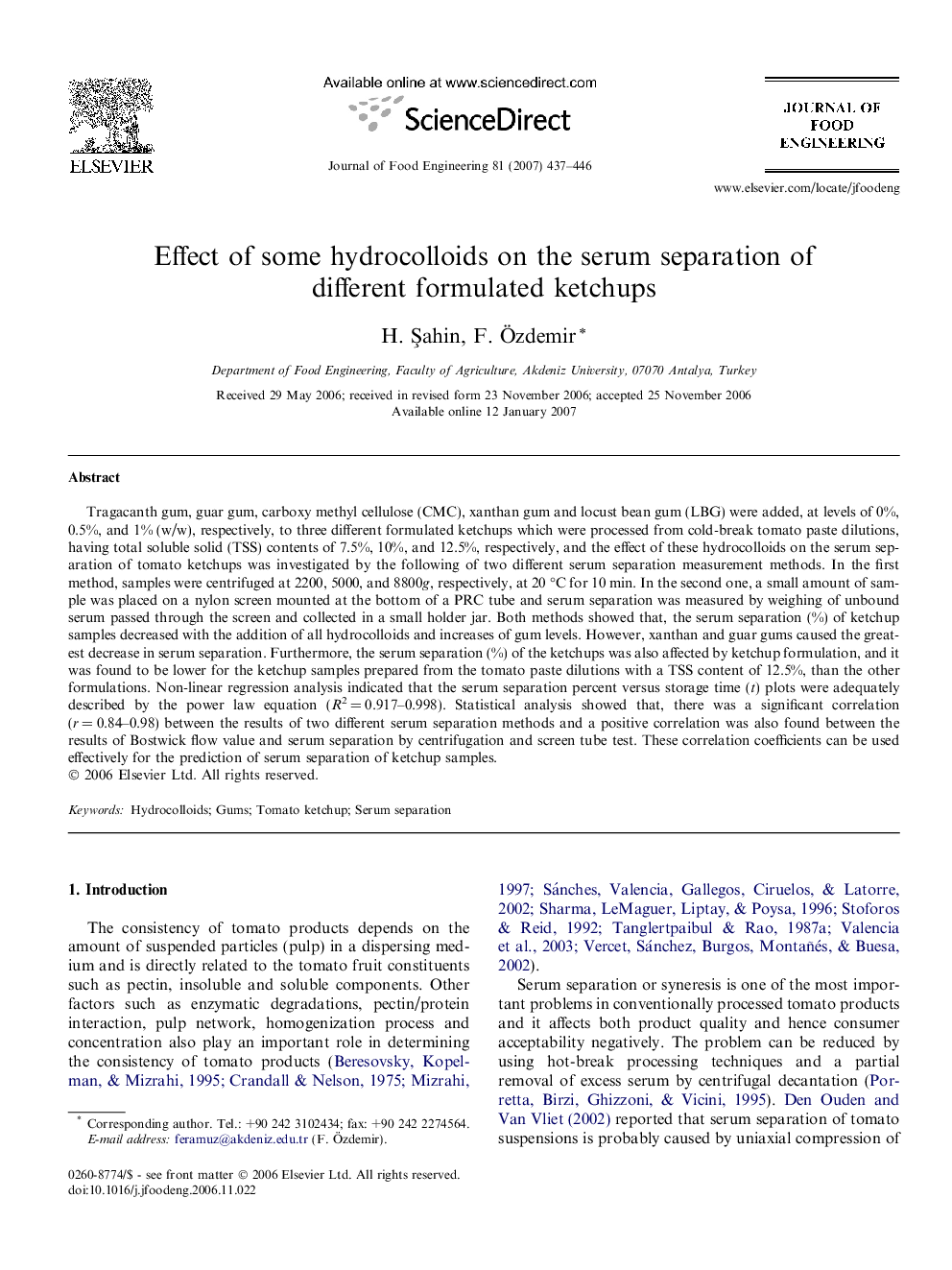| Article ID | Journal | Published Year | Pages | File Type |
|---|---|---|---|---|
| 224829 | Journal of Food Engineering | 2007 | 10 Pages |
Tragacanth gum, guar gum, carboxy methyl cellulose (CMC), xanthan gum and locust bean gum (LBG) were added, at levels of 0%, 0.5%, and 1% (w/w), respectively, to three different formulated ketchups which were processed from cold-break tomato paste dilutions, having total soluble solid (TSS) contents of 7.5%, 10%, and 12.5%, respectively, and the effect of these hydrocolloids on the serum separation of tomato ketchups was investigated by the following of two different serum separation measurement methods. In the first method, samples were centrifuged at 2200, 5000, and 8800g, respectively, at 20 °C for 10 min. In the second one, a small amount of sample was placed on a nylon screen mounted at the bottom of a PRC tube and serum separation was measured by weighing of unbound serum passed through the screen and collected in a small holder jar. Both methods showed that, the serum separation (%) of ketchup samples decreased with the addition of all hydrocolloids and increases of gum levels. However, xanthan and guar gums caused the greatest decrease in serum separation. Furthermore, the serum separation (%) of the ketchups was also affected by ketchup formulation, and it was found to be lower for the ketchup samples prepared from the tomato paste dilutions with a TSS content of 12.5%, than the other formulations. Non-linear regression analysis indicated that the serum separation percent versus storage time (t) plots were adequately described by the power law equation (R2 = 0.917–0.998). Statistical analysis showed that, there was a significant correlation (r = 0.84–0.98) between the results of two different serum separation methods and a positive correlation was also found between the results of Bostwick flow value and serum separation by centrifugation and screen tube test. These correlation coefficients can be used effectively for the prediction of serum separation of ketchup samples.
